
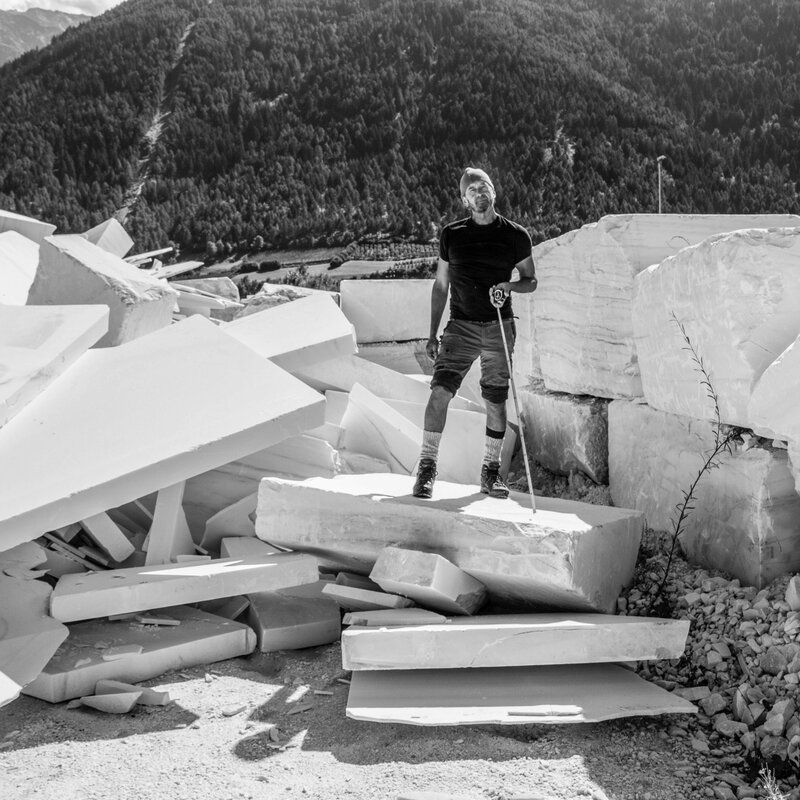
Motivated by his enthusiasm for experimenting with a wide variety of materials, the artist and sculptor Helmut Pizzinini, born in Val Badia in 1961, shows a special fondness for the creation of wooden compositions. For the realisation of his works, the autodidact, who is well-known among important art critics, also uses other materials: In addition to the utilisation of metal, his artistic curiosity also inspired him to study the processing technique of marble for two years in quarries.
You may have seen one of his works in art galleries such as the Palazzo Strozzi and the Villa Romana in Florence, the Museion in Bolzano or the Mart in Trento. Or maybe you were able to admire his skills on some other occasion as Pizzinini also works in many other areas! Besides being a member of the Ladin art circle "Epl", he also designs awards for companies (amongst others for Salewa), collaborates with various architecture and design studios and is also working in interior design to realise works for both private clients and luxury hotels.
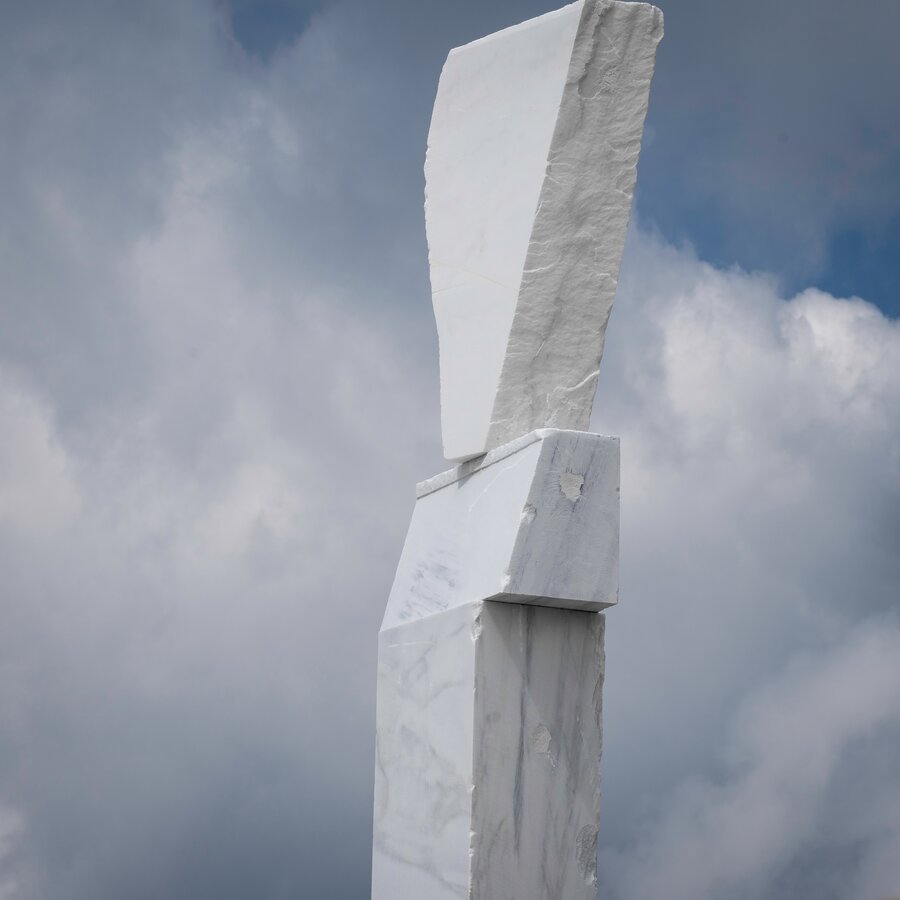
The idea for the creation of the sculptures is all linked to the legend of the "Wise warrior in the realm of the pale mountains", which tells of Princess Dolasilla. The legend says that the princess of the impressive Fanes kingdom was crowned on our Kronplatz and, in the framework of the project, it was exactly this moment that the artist Helmut Pizzinini wanted to preserve in his works. The three stone sculptures represent the crown of Princess Dolasilla and offer a fabulous view on her kingdom along the Concordia 360° Panorama Trail.
If you take a closer look, you will notice a peculiarity, as for each of the sculptures a different type of stone was used. Why? Let us tell you!
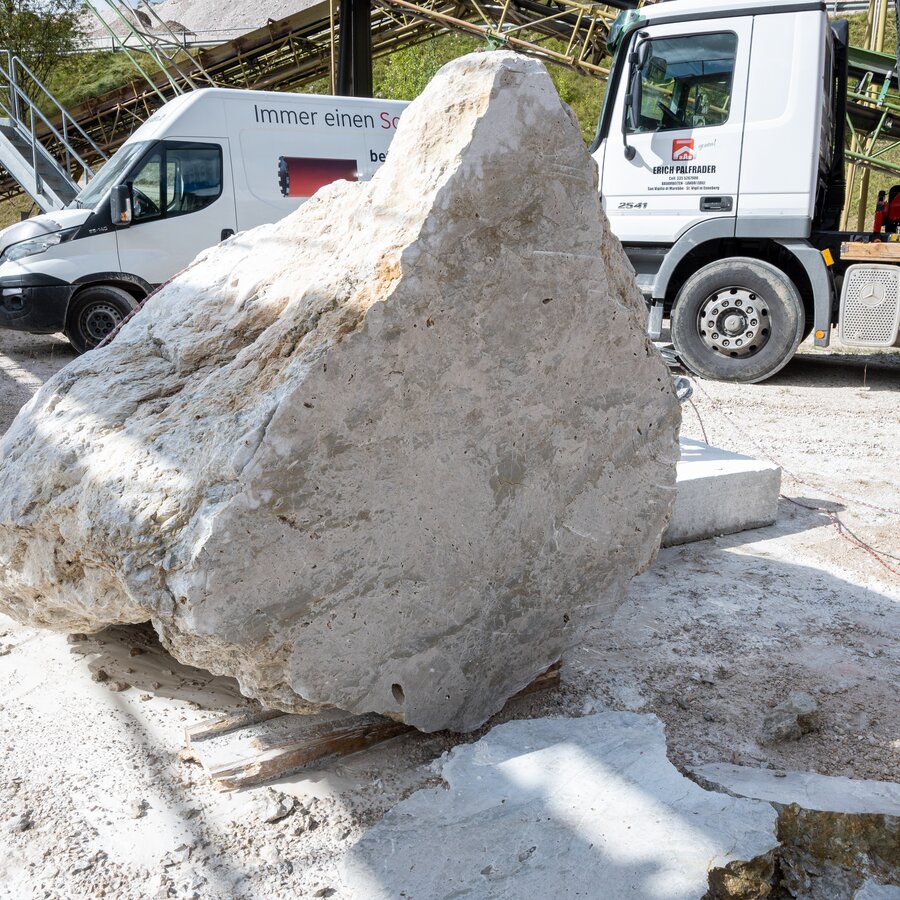
The three stone sculptures representing the crown of Princess Dolasilla had to be as special as the geological characteristics of the surroundings. This is why Pizzinini used dolomite, granite and marble from Laas/Lasa for his sculptures.
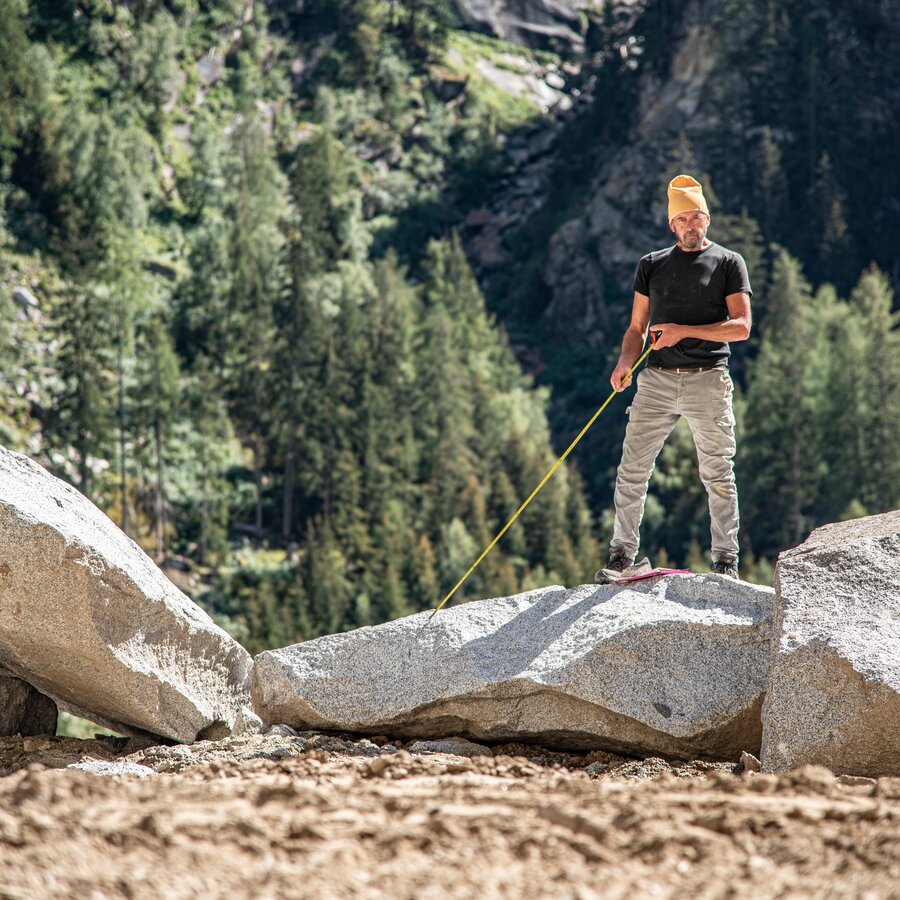
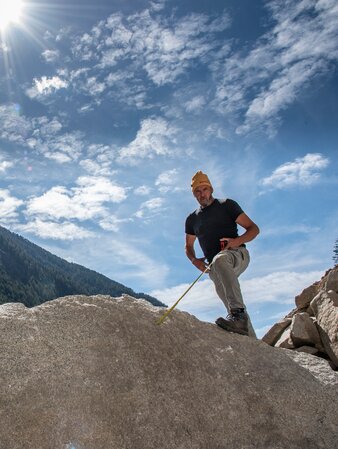
The granite symbolises the Alps in the north. Granite is a so-called plutonite: an igneous rock formed by the slow cooling and solidification processes of magma below the earth's surface. Granite consists of the three minerals feldspar, quartz and mica and is characterised by its variety of colours, which can range from pink, white-grey, dark grey, blue-white and even up to greenish and yellowish tones. A closer look at the granite reveals that the light pink, salmon pink and white mineral components represent feldspars, while the dark mica mineral biotite emerges in the form of dark grey to black crystals and the light mica mineral muscovite as a shiny white-silver component. The actually light-coloured quartz, on the other hand, appears grey due to its translucent transparency, which acts like a “window in the rock”.
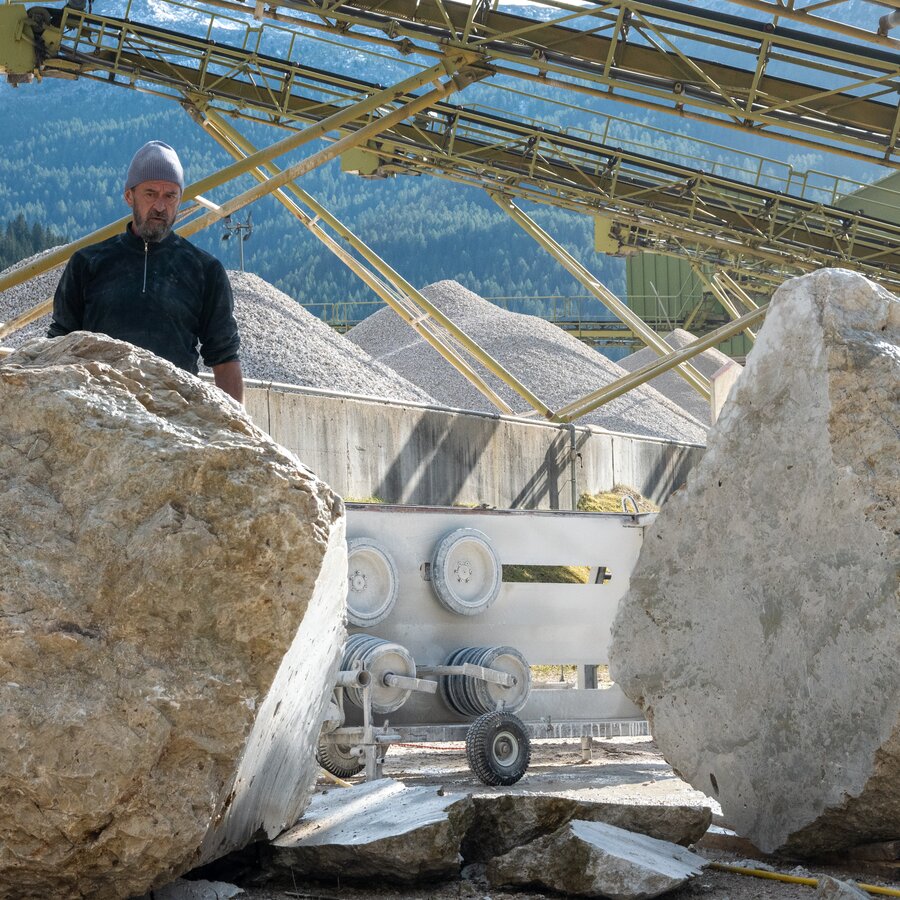
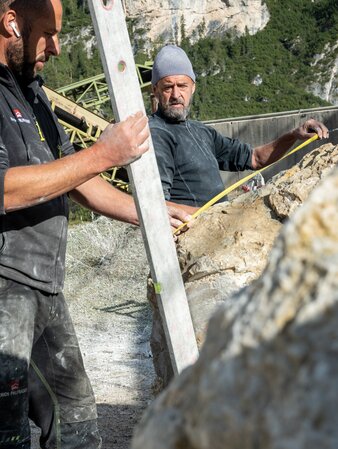
The dolomitic rock represents the Dolomites in the south. It is a crystalline, monomineral stone of marine origin and, depending on its content of magnesium, it shimmers in its typical white, pink or grey colour. If it is combined with other minerals, dolomite can also be given a yellowish, greenish or brownish tone. Wondering what actually turns the dolomite into dolomite? In order to be classified as dolomite (apart from its shimmering and splintering surface), the rock must possess at least 90% of the dolomite mineral - otherwise the rock is defined as dolomitic limestone. Furthermore, the dolomite rock shows a fine to medium granular size as well as parallel mineral layers, which can consist of up to 5% of calcite, goethite, pyrite and marcasite. The structure is usually homogeneous and compact, but it can also appear porous and contain fillings of evaporites such as salt or gypsum. In this case, it is referred to as cellular dolomite.
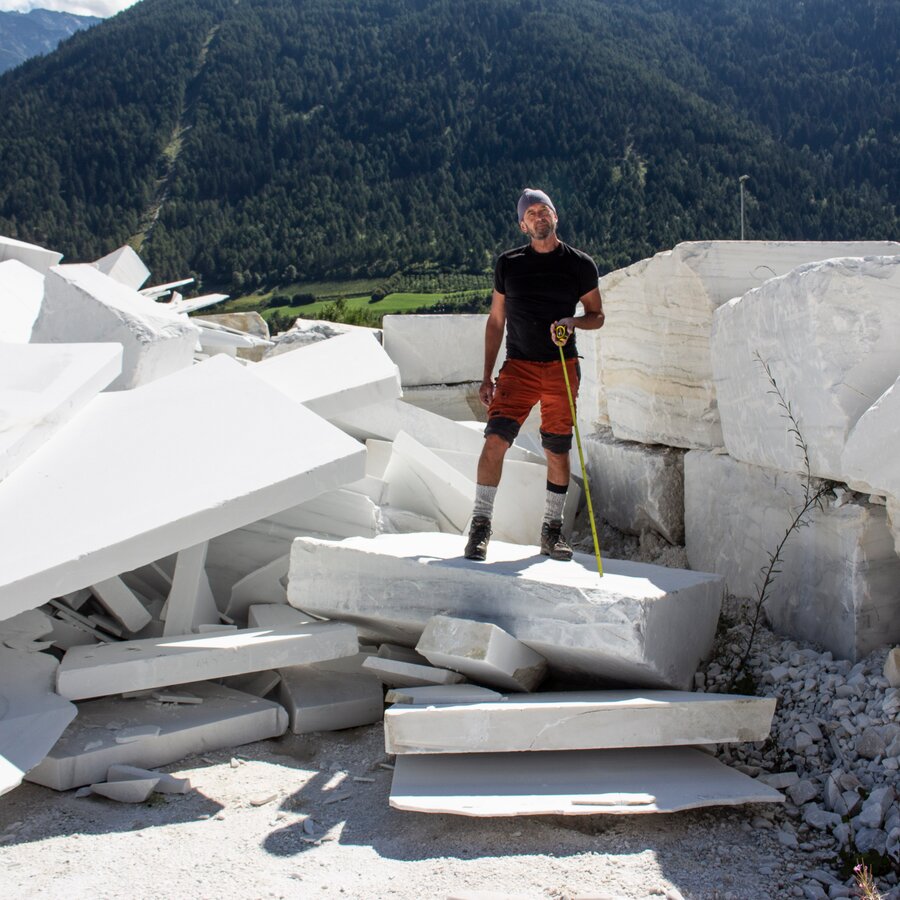
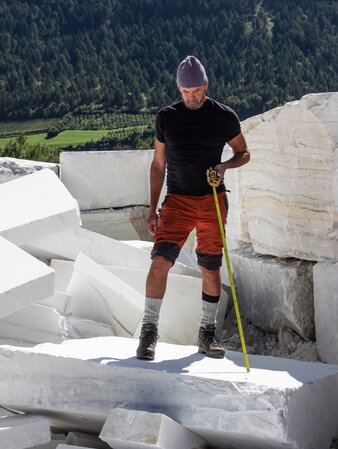
The marble of Laas/Lasa stands for the mountains in the west. It is hard, resistant, weatherproof and watertight. Compared to other types of marble, the marble quarried in the valley of Laas is finer-grained – a characteristic that turns it particularly noble and valuable. You may not have been aware of it, but you have certainly come across the marble from Laas as it was used by numerous architects, especially towards the end of the 19th century, for the realisation of neoclassical buildings in the major European metropolises such as Vienna, Munich and Berlin. Moreover, this type of marble was also preferred by sculptors to create famous works such as the Statue of Helmuth von Moltke the Elder, the Pallas Athena Fountain in front of the Parliament Building in Vienna, the Queen Victoria Memorial in front of Buckingham Palace in London, the Heinrich Heine Memorial in New York as well as the 90,000 gravestones for the US soldiers who died in World War II and have been buried in 13 European military cemeteries.